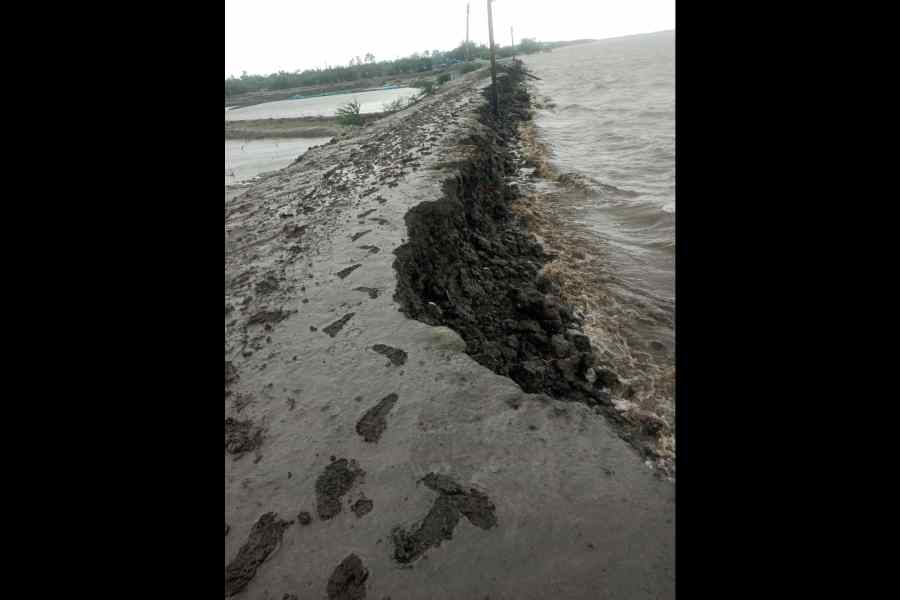This year’s flood in Assam has been devastating, although not unprecedented. In fact, floods in Assam have become an annual event, leaving millions of lives shattered every year and costing the state dearly. The scenes on our television screens and the social media feed leave us with a sense of déjà vu. These events are being normalised either as a natural disaster or, increasingly, as a climate change-induced phenomenon. It is a familiar story in other parts of eastern India as well, with Bihar being one of the worst-affected states.
While flash floods, a recurring event across Indian cities nowadays, are largely the result of poor urban planning and inefficient municipal administration, a flood has to be understood in relation to ‘flood control’ and, by extension, control of the river itself which poses larger, philosophical questions. This calls into attention our worldview on rivers, raising questions about how we imagine our ‘hydro-sociality’. Of further importance is to examine what one might call the ‘governmentality of floods’ — that is the power that an entire apparatus of institutions, practices, and technologies exercises vis-à-vis flood risk management.
Central to the Indian State’s flood management system is the construction of embankments which date back to the colonial era (although pre-colonial embankments also exist). Enough has been written about the perils of embankments and I will not go into those in this piece. Not only writings but songs have also been sung and films made about embankment-induced catastrophes. Way back in 1929, the American blues singers, Memphis Minnie & Kansas Joe McCoy, composed “When the Levee Breaks” (later reworked by Led Zeppelin) in the context of the Great Mississippi Flood of 1927.
Be it the levees on American rivers or the colonial and post-colonial embankments on Indian rivers, research has shown that far from controlling flood, these embankments have aggravated the flood crisis, rendering traditionally flood-dependent communities flood-vulnerable. Critique of an embankment-centric flood control approach has, at times, emerged from within the State itself. The 1980 Rashtriya Barh Ayog report, for instance, noted: “Flood control should not be considered as an end in itself, rather it is the means to an end. Flood control has to be viewed within the broad context of the economic and social development in the country. Management of floods should be considered in the context of the overall plan for management of the water resources of a river basin… The approach, therefore, cannot be static, but should remain dynamic and flexible.”
Rural communities realise the risks posed by embankments very well. In my own research sites in Majuli, Assam, villagers have often referred to embankments as “mrityu-baan” (weapons of death). Clearly, neither research nor local knowledge has been given due attention by policymakers. Little wonder then that even as Assam was drowning recently — largely due to embankment breaching — the water resources minister of the state promised, ironically, hundreds of kilometres of new embankments.
Why this obsession with embankments?
In my view, the embankment fetish of the State is rooted in two factors: first, the modernist ideology, a hubris, of human’s mastery over nature, that nature can be controlled and disciplined; second, and more importantly, it highlights two interrelated things: first is what the anthropologist, David Graeber, said about bureaucracy, that it is a “dead zone of imagination”. Thus, the hydraulic bureaucracy cannot think beyond embankments or similar structures, as evidenced by the case of Assam ever since the Assam Embankment and Drainage Act of 1953 came to pass. Almost like an automated entity, the bureaucracy carries on with embankments year after year. Second, the embankments seem to have become part of the ecosystem of the hydraulic bureaucracy, with deep roots and rhizomes, entangling multiple actors with various stakes. So everyone loves a weak embankment that requires repairing or rebuilding.
What is to be done? Is ‘flood control’ even possible in geographies like the Brahmaputra valley with such a potent monsoon? Must every flood be a disaster? Going back to the Rashtriya Barh Ayog’s recommendations, we must seriously consider watershed management and floodplain management at the basin level (thus requiring cooperation among riparian states and nations) while also pursuing various non-structural measures such as flood forecasting and warning, flood proofing, flood defence education, and capacity building of local communities and institutions. Deforestation of the Himalayas and its foothills must be stopped in order to reduce the force of the rivers in the monsoon. What if we built and revived a network of channels (like the ones that existed alongside rural roads and fields) that could absorb the excessive water in the monsoon? How about regulations on the types of permissible dwellings in flood-prone areas? There’s much to learn here from indigenous communities inhabiting the riverine geographies of the Brahmaputra for generations. A robust crop and livestock insurance system will also go a long way in checking floods. In short, we need a new environmental imagination if we are to co-inhabit these floodplains.
A resident of a riverside village in Majuli once told me: “Nodikhon bor komal, moromere subo lage” (The river is too delicate, it should be touched with love). How about we commit to that: to love our rivers, again?
Mitul Baruah is an Associate Professor at Ashoka University. Views are personal











